History of Kwanzaa
From Giftypedia
What is Kwanzaa?
Kwanzaa is a week-long secular holiday celebrated in the United States in the African-American community. The holiday was developed by Dr. Ron Kaurenga. The holiday was first celebrated in December 1966 in California. Kwanzaa celebrations are from December 26th to the 1st of January. It is estimated that 4 million people in the United States celebrate the holiday every year.
Contrary to popular belief, the holiday did not start in Africa. The holiday was created during the social and political changes that were affecting the African-American community in the 1960's. According to Kaurenga, the holiday originally started as an alternative to the Christmas holiday and to give African Americans the opportunity to celebrate their own history and heritage. Kaurenga adapted several African traditions for the holiday because Kaurenga felt that African-Americans would be less likely to celebrate it if they knew immediately of the holiday's American origins. The timing Dr. Karenga chose for the celebration was practical because the time between Christmas and New Year’s Day was the height of party season for many people.
The term Kwanzaa is derived from the Swahili word kwanza, which means ‘first fruits’. A Swahili term was chosen specifically to emphasize the Pan-African spirit of Kwanzaa. Ironically, the vast majority of African-Americans are the descendants of West Africans.
The term carries other connotations as well. The extra ‘a’ was added, in part, so that every letter in the name would stand for one of ‘Seven Principles of Blackness’.
As an ever evolving holiday, according to Dr. Kaurenga, Kwanzaa is not just for African Americans, it can be celebrated by people regardless of race or culture.
Seven principles of Kwanzaa
Umoja (Unity) To strive for and maintain unity in the family, community, nation and race.
Kujichagulia (Self-Determination) To define ourselves, name ourselves, create for ourselves and speak for ourselves.
Ujima (Collective Work and Responsibility) To build and maintain our community together and make our brother's and sister's problems our problems and to solve them together.
Ujamaa (Cooperative Economics) To build and maintain our own stores, shops and other businesses and to profit from them together.
Nia (Purpose) To make our collective vocation the building and developing of our community in order to restore our people to their traditional greatness.
Kuumba (Creativity) To do always as much as we can, in the way we can, in order to leave our community more beautiful and beneficial than we inherited it.
Imani (Faith) To believe with all our heart in our people, our parents, our teachers, our leaders and the righteousness and victory of our struggle.
Symbols of Kwanzaa
Mazao (The Crops) These are symbolic of African harvest celebrations and of the rewards of productive and collective labor.
Mkeka (The Mat) This is symbolic of our tradition and history and therefore, the foundation on which we build.
Kinara (The Candle Holder) This is symbolic of our roots, our parent people -- continental Africans.
Muhindi (The Corn) This is symbolic of our children and our future which they embody.
Mishumaa Saba (The Seven Candles) These are symbolic of the Nguzo Saba, the Seven Principles, the matrix and minimum set of values which African people are urged to live by in order to rescue and reconstruct their lives in their own image and according to their own needs.
Kikombe cha Umoja (The Unity Cup) This is symbolic of the foundational principle and practice of unity which makes all else possible.
Zawadi (The Gifts) These are symbolic of the labor and love of parents and the commitments made and kept by the children.
The two supplemental symbols are:
Bendera (The Flag) The colors of the Kwanzaa flag are the colors of the Organization Us - black, red and green; black for the people, red for their struggle, and green for the future and hope that comes from their struggle. It is based on the colors given by the Hon. Marcus Garvey as national colors for African people throughout the world.
Nguzo Saba Poster (Poster of The Seven Principles)
Celebrating Kwanzaa
Kwanzaa celebrations incorporate several decorative items, most families prepare in advance to festively decorate their homes. Kwanzaa decorations are typically black, red and green; which are the holidays symbolic colors. An area of the home is decorated and a table is set up to display the symbols of Kwanzaa. The walls around the table are decorated with flags, banners, posters, sculptures and other artwork.
Setting up the Traditional Kwanzaa Table
- Cover the table with a beautiful tablecloth. Choose a solid green or black colored cloth or an African print.
- Spread out the Mkeka (The Mat).
- Place the Kinara (Candleholder) in the middle of the Mkeka.
- Place the Mishumaa Saba (The Seven Candles) into the Kinara.
- The candles that are used are 3 red, 1 black, and 3 green. The black candle is placed in the center of the candle holder, the three green candles are placed on the left, and three red candles on the right.
- Place the Muhindi (The Corn) on the table, group the corn together on one side of the table.
- At least two ears of corn should be used, one ear of corn for each child in the family. If there are no children in the family, the corn represents children of the community.
- Place on the Mkeka the Mazao (The Crops) in a wooden or ceramic bowl.
- You can also arrange additional fruits and vegetables around the bottom of the bowl or in clusters around the table to represent overflowing abundance.
- Place the Kikombe cha Umoja (The Unity Cup) in front of the Kinara to one side, but still on the Mkeka.
- Arrange the Zawadi (The Gifts) on the Mkeka.
- Arrange the Kwanzaa gifts that are presented to the children. The gifts must include a book or a symbol of their heritage to help educate the children and to place an emphasis on learning and culture.
- Hang a Bendera near the table, and it should be facing east.
- The Nguzo Saba Poster (Poster of The Seven Principles) should be placed behind, above, or adjacent to the table.
During the Kwanzaa celebration one candle should be lit each day starting with the black candle, then light candles from left to right. Each day while lighting the candles one of the seven principles should be recited.
Gift Ideas for Kwanzaa
Handmade gifts gifts are consistent with the principles of Kwanzaa. Examples of homemade gifts for Kwanzaa can include clothing made from African prints, food and cooking items such as herbal teas and spice blends, and wood carvings. Some African heritage themed gifts should be included; books, videos or other educational items are typical.
Related Guides
Resources
- Official Kwanzaa Website - The Seven Principles
- CNN Interactive - History of Kwanzaa
- eHow - How to Choose Kwanzaa Gifts
- quickhistory.net - History of Kwanzaa

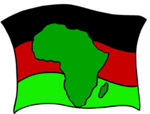
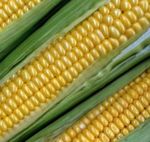


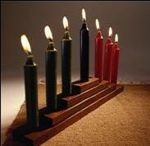
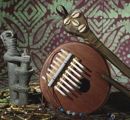


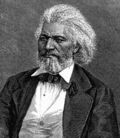

 Printer Friendly
Printer Friendly
